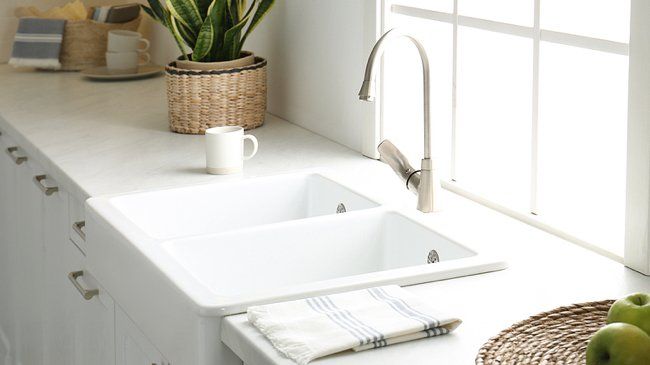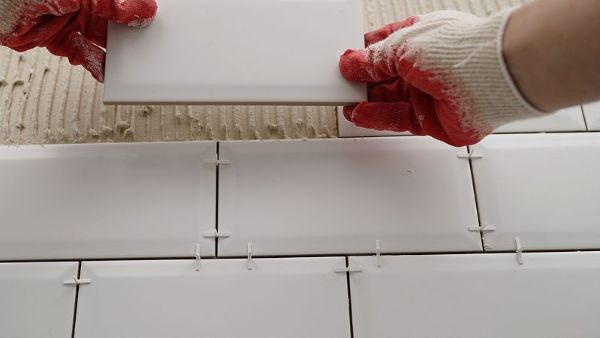Blog
Latest Design Trends, Tips and News
Measuring a Kitchen Sink in 7 Steps
Replacing a kitchen sink can be part of a larger remodeling job, or it can be done on its own. In the former case, you may need to call a Sonoma County countertop supplier to find a replacement countertop. Whether you are remodeling the entire kitchen or just replacing the sink, you need to take some measurements first to make sure that the new sink is the correct size. Here are some steps to take to make sure the information you collect is accurate and useful.
1. Gather Your Tools
You don't need a lot of tools to measure a kitchen sink, but it is a good idea to gather everything you need beforehand so that you know that you have it. The tools you need to measure a sink are as follows:
- Tape measure (alternatively, a straightedge ruler or yardstick)
- Markers, pens, or pencils
- A level
2. Prepare the Sink and Cabinet
It is not only the sink itself that you have to measure when planning its replacement. You also need to measure the cabinet underneath. Before you start, you should make sure that the sink itself is clean and empty. You should also empty out the base cabinet underneath the sink so that you can take accurate measurements.
3. Measure the Sink
The sink has to be measured out in at least three dimensions: length, width, and depth. The width of the sink refers to the measurement from the back of the sink, where the faucet is, to the front, and this is the direction you should take when you are measuring it. The length is measured from the left side of the sink to the right.
When measuring the depth of the sink, you cannot just put your ruler or tape measure up along the side because the side of the sink usually curves slightly. The deepest point of the sink is somewhere in the middle. Lay your level or a straight-edge ruler across the sink so you can get an accurate measurement from the bottom to the top.
4. Determine What Type of Sink You Have
If you know about the different types of sinks, you can probably tell this just by looking. If not, you need to understand the different types of sinks to identify what you have:
- Drop-in sinks are one of the most common types. A drop-in sink has a rim along the top edge of the basin that rests on the counter.
- Undermount sinks do not rest on top of the counter. They have a rim, but the countertop covers it up.
- Apron sinks are also known as farmhouse sinks. Unlike the other two, the front of the sink is exposed rather than covered up by false cabinet drawers. This type of sink also tends to be deeper than the other two.
The type of sink you have influences how you take measurements. For example, if you have a drop-in sink, you measure to the edge of the rim, whereas with an undermount sink, you measure to the edge of the opening. You have to take extra measurements of the apron sink because of its exposed front.
5. Measure the Cabinet Space
If you intend to install a larger sink than the one you have now, you may have to enlarge the cabinet as well. If you intend to install a sink of the same size, measuring the cabinet tells you whether it will fit. In either case, measuring the cabinet is an important step.
Depth and width mean different things when measuring the cabinet. The depth of the cabinet is measured by starting at the back and measuring along the bottom to the front. The width of the cabinet is measured from the left edge to the right. There is usually a small margin of counter space along the sides of the sink, so to determine the sink width, subtract four inches from the width of the cabinet and one in from its depth.
6. Measure the Cutout
Thus far, the measurements you need can be taken with the sink still in place. To measure the cutout, i.e., the hole in the counter in which the sink fits, you need to first remove the existing sink. Therefore, this should be one of your last steps.
You take the measurements the same way that you measured the sink but, depending on the type of sink you have, the measurements vary. The cutout for an undermount sink should measure the same as the sink itself. However, because a drop-in sink has a lip that rests on the counter, the cutout for a drop-in sink should be slightly smaller than the sink's measurements.
7. Confirm Accuracy
Accurate measurements are very important to the success of your project. To make sure the measurements are accurate, take each of them at least twice.
For more information about purchasing a new countertop or connecting with local designers and installers for your kitchen remodel,
contact us at 707-578-1350.
Be The First To Know
Stay updated on the latest design trends, tips and news by subscribing to our blog
Comments
Posts You May Also Like

Sonoma County Showroom
2157 Santa Rosa Ave.
Santa Rosa, CA 95407
707.578.1350
Sonoma County Warehouse
3635 Standish Ave.
Santa Rosa, CA 95407
707.578.1350
Marin County Warehouse and Showroom
30 Castro Ave,
San Rafael, CA 94901
415.221.8558
Services
Products
Company
Resources
Legal
Join our Newsletter
Newsletter Signup Footer
Thank you for subscribing to our newsletter.
Oops, there was an error.
Please try again later.




